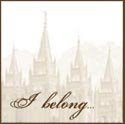My daughter and I were doing crafts last week and listening to Christmas songs. After listening to "O Holy Night" she asked me if I knew the story behind the song, since I collect Christmas stories. I didn't, so she googled it and we were amazed by the story. I thought I'd share it with you.
In 1847, a parish priest wanted a poem for Christmas mass. He asked his friend, Placide Cappeau de Roquemaure, who was the commissionaire of wines in their small French town. Cappeau was traveling to Paris by coach when he was considering the priest's request. He decided to use the gospel of Luke for his guide. By the time he arrived in Paris, he had written the words to "Cantique de Noel" ("O Holy Night").
Cappeau decided that O Holy Night should not just be a poem, but should be set to music. Since he was not musically inclined himself, Cappeau turned to one of his friends, Adolphe-Charles Adam to help him.
Adolphe-Charles Adam was the son of a well-known classical musician. He had studied in Paris at the conservatoire. He had written works for orchestras and ballets all over the world. But when his friend Cappeau gave him the lyrics to "O Holy Night", he must have had a greater challenge.
Adam was of Jewish ancestry. The words of "O Holy Night" were about a holiday he didn't celebrate and about a man he did not view as the son of God. Nevertheless, he was able to write the beautiful words to "O Holy Night" and the song was performed just three weeks later at a Midnight Mass on Christmas Eve.
"O Holy Night" was wholeheartedly accepted by the church in France at first, but later on Cappeau left the church and became a part of the solialist movement and then church leaders discovered that the composer was a Jew. The heads of the French Catholic church banned "O Holy Night" from their church and declared it "unfit" for their services because of its lack of musical taste and "total absence of the spirit of religion".
Even though it was banned from the Catholic church, the French people continued to sing it and a decade later an American writer, John Sullivan Dwight, brought it to America.
John Sullivan Dwight was an abolitionist who identified with the lines of the third verse: "Truly he taught us to love one another; his law is love and his gospel is peace. Chains shall he break for the slave is our brother; and in his name all oppression shall cease." After Dwight published the English words to "O Holy Night" in his magazine, "O Holy Night" became quickly popular in America, especially in the North during the Civil War.
On December 24, 1906, the first extended broadcast of the human voice was transmitted through the air from Brant Rock, Massachusetts. Until then, the "wireless telegraph" had only carried dots and dashes of the Morse code, but Professor Reginald Fessenden was convinced that it could also carry the human voice.
Using a new type of generator, Fessenden spoke into a microphone: "And it came to pass in those days, that there went out a decree from Caesar Augustus, that all the world should be taxed..."
Imagine the shock of radio operators on ships and wireless owners at newspapers to hear a human voice for the first time in history broadcast across the air! Fessenden was probably unaware of the sensation he was causing. After finishing his reading of the birth of Christ, he picked up his violin and played, "O Holy Night," the first song ever broadcast through radio waves!
Subscribe to:
Post Comments (Atom)






3 comments:
How cool! Thanks for sharing that!
Interesting! That is one of my favorites. Especially when Il Divo sings it.
Just wanted you to know that the quote at the top by St. Francis was very comforting to me today.
Keira
Post a Comment